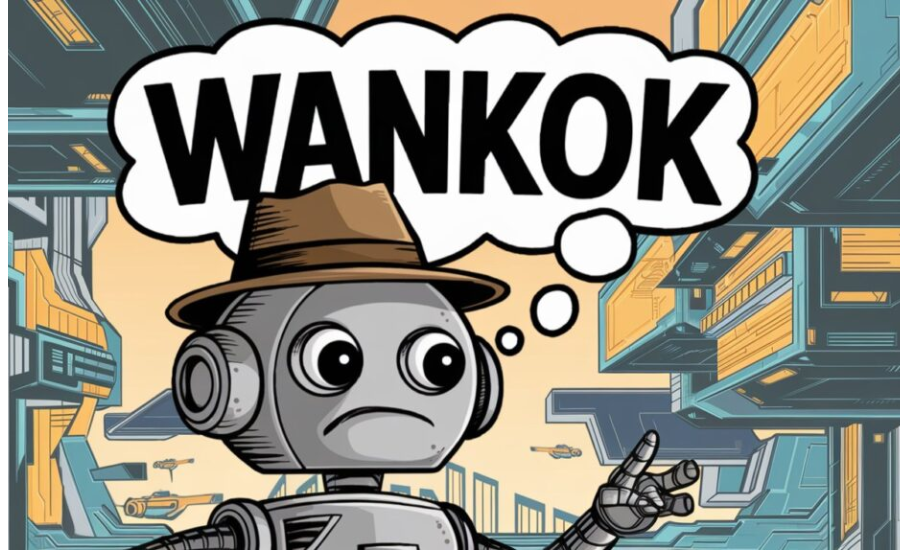The internet has a knack for creating and amplifying trends that blur the lines between humour, absurdity, and cultural commentary. One of the latest entrants to this ever-growing list is “Silly Wankok,” a term that, despite its seemingly nonsensical nature, has captured the attention and creativity of online communities worldwide. From sparking countless memes to inspiring debates, “Silly Wankok” exemplifies the quirky, unpredictable nature of internet culture. This article explores its origins, rise to fame, and cultural impact while dissecting why terms like this resonate so strongly in today’s digital age.
The Mysterious Origins Of ‘Silly Wankok’

Like many viral phenomena, “Silly Wankok” has origins shrouded in mystery. Its first appearances trace back to niche online communities where humor often thrives on inside jokes and absurdity. Early mentions of the term surfaced in forum discussions and on platforms like Reddit and Twitter, where users frequently share bizarre yet humorous content.
Although its precise beginnings remain uncertain, many speculate that “Silly Wankok” started as a random phrase coined for comedic effect. Small groups initially used it to amuse themselves, but it didn’t take long for the term to explode in popularity. Social media platforms, particularly TikTok, Instagram, and Twitter, played a pivotal role in propelling it to the mainstream. Users began incorporating it into memes, video captions, and even casual conversations, giving the term a life of its own.
Absurdity As A Driving ForceIn Internet Trends
The success of “Silly Wankok” speaks to a larger trend in internet humor: the embrace of absurdity. Unlike traditional comedy, which often relies on structured setups and punchlines, absurd humour derives its appeal from its randomness and unpredictability.
Terms like “Silly Wankok” share similarities with other iconic internet memes, such as “doge” or “Shrek is love, Shrek is life.” These phrases and ideas thrive because they defy logical interpretation. They appeal to audiences seeking humour that feels fresh and unconventional, offering a welcome break from the routine.
Absurd humour also fosters a sense of exclusivity. Being “in the know” about a term like “Silly Wankok” creates a shared identity among internet users. This sense of belonging further drives engagement, turning an inside joke into a widespread phenomenon.
The Mechanics of Virality: How ‘Silly Wankok’ Spread
Understanding how “Silly Wankok” became a viral sensation requires examining the mechanisms of virality. Social media platforms act as accelerators, allowing quirky content to reach millions within hours.
- Memes and Visual Content: Memes featuring the term quickly gained traction on Twitter and Instagram. These memes often paired the phrase with unrelated yet humorous visuals, enhancing its absurd appeal.
- Hashtag Culture: Hashtags like #SillyWankok allowed users to track and contribute to the trend. The term’s adaptability made it easy for users to create diverse content, ranging from reaction gifs to parody videos.
- Influencers and Trendsetters: Influential creators on TikTok and YouTube adopted the term early, embedding it in their content. This endorsement amplified its reach, especially among younger audiences who dominate these platforms.
- Feedback Loops: The more users engaged with “Silly Wankok,” the more the algorithms prioritised it. This cyclical interaction ensured that the term remained visible and relevant for an extended period.
Cultural Impact And Community Dynamics

One of the most intriguing aspects of “Silly Wankok” is its ability to transcend its origins and become a cultural touchstone. Different online communities adopted the term, imbuing it with unique meanings and uses. For some, it was simply a humorous catchphrase; for others, it symbolised the unpredictability of internet culture.
In addition to fostering creativity, “Silly Wankok” highlighted the internet’s potential to unite people. By engaging with the trend, users became part of a larger narrative. This sense of shared experience is a hallmark of viral phenomena and explains why such trends resonate across diverse demographics.
The Psychological Allure Of ‘Silly Wankok’
What makes a term like “Silly Wankok” so captivating? The answer lies in its psychological appeal.
- Playfulness and Surprise: Humans are naturally drawn to things that surprise or amuse them. “Silly Wankok” delivers humor without requiring deep analysis, offering instant gratification.
- Escapism: In a world filled with stress and uncertainty, absurd humor provides a welcome escape. Engaging with trends like “Silly Wankok” allows people to momentarily step away from their worries and enjoy lighthearted fun.
- Social Connection: Sharing and interacting with content related to “Silly Wankok” fosters a sense of belonging. Users feel connected to others who appreciate the same humor, creating a virtual community.
Integration InTo Mainstream Media And Pop Culture

As with many viral trends, “Silly Wankok” eventually broke out of its internet origins and entered mainstream media. References to the term appeared in comedy shows, advertising campaigns, and even music lyrics. Brands and influencers seized the opportunity to capitalize on its popularity, using it to connect with internet-savvy audiences.
This mainstream adoption reflects the evolving nature of cultural trends. What starts as an obscure joke can quickly gain enough momentum to influence broader entertainment and marketing strategies.
The Linguistic Evolution Of ‘Silly Wankok’
Language is fluid, and terms like “Silly Wankok” demonstrate how the internet accelerates linguistic evolution. Over time, the phrase has taken on new meanings, often tailored to specific contexts or communities.
Interestingly, “Silly Wankok” has also crossed linguistic and cultural barriers. Users worldwide have adopted and adapted the term, making it a truly global phenomenon. This adaptability ensures its relevance even as new trends emerge.
Critiques And Controversies Of “Silly Wankok”
No viral trend escapes scrutiny, and “Silly Wankok” has faced its share of detractors. While its widespread popularity highlights its success, critics argue that the trend represents the superficiality of internet culture. Some see it as emblematic of a digital era where trends burn brightly but fade quickly, leaving little lasting impact. They claim that such phenomena highlight society’s short attention span and the tendency to embrace content that lacks depth.
Generational differences also fuel the discourse. Younger audiences often gravitate toward absurd humor and seemingly meaningless trends, while older generations may struggle to understand or connect with the appeal. This disconnect underscores a broader debate about how digital humor reflects evolving cultural norms.
Despite these critiques, “Silly Wankok” has largely avoided significant controversy. Its lighthearted and non-political nature has shielded it from intense backlash or polarizing debates. Unlike other trends that spark division or stir debates on sensitive issues, “Silly Wankok” remains rooted in harmless fun, making it more universally accepted.
However, detractors warn of potential overexposure. As the term becomes more mainstream, its novelty could diminish, and its appeal might wane. Critics argue that this risk of dilution reflects a broader pattern in internet culture, where oversaturation often leads to a trend’s decline.
The Future Of “Silly Wankok”

Predicting the lifespan of any viral phenomenon is challenging, but “Silly Wankok” demonstrates several characteristics that may contribute to its longevity. Its adaptability is one of its strongest assets, allowing it to evolve across platforms and contexts. Memes, captions, and parodies involving the term have proven remarkably versatile, resonating with diverse online communities.
Moreover, its infiltration into mainstream media suggests a staying power beyond the typical lifecycle of internet trends. References in comedy sketches, advertisements, and social commentary indicate that “Silly Wankok” has transcended its niche origins. As it continues to gain traction, the term may undergo further transformations, cementing its place in popular culture.
However, the risk of overexposure looms large. Viral trends often lose their charm when they become overly ubiquitous, repeated to the point of exhaustion. If “Silly Wankok” saturates platforms without evolving meaningfully, it risks being dismissed as a passing fad.
Nonetheless, its impact on digital culture is undeniable. Even if the trend fades, its legacy will endure as a testament to the internet’s capacity for creating shared experiences through humor and absurdity. The global reach and creative engagement it inspired demonstrate how seemingly random phenomena can unite and entertain people across cultures.
FAQs About “Silly Wankok”
Q. What is the origin of “Silly Wankok”?
“Silly Wankok” originated in niche online communities, particularly on platforms like Reddit and Twitter, where users shared absurd humor. The exact origin is unclear, but it was likely coined for comedic effect in small circles before gaining traction on mainstream platforms like TikTok and Instagram.
Q. Why has “Silly Wankok” become so popular?
The popularity of “Silly Wankok” can be attributed to the appeal of absurd humor and randomness in internet culture. Its unpredictability and lack of logical structure make it amusing to a wide audience. The term’s adaptability across various types of media, including memes and videos, has helped it spread quickly across social platforms.
Q. What makes “Silly Wankok” different from traditional internet memes?
While many internet memes rely on relatable humor or structured jokes, “Silly Wankok” thrives on its sheer randomness. Its meaning is deliberately ambiguous, which creates a sense of exclusivity and camaraderie among those who understand or participate in the joke.
Q. Has “Silly Wankok” been adopted by mainstream media?
Yes, “Silly Wankok” has crossed over into mainstream media. References to the term have appeared in comedy shows, advertising campaigns, and even music lyrics, showcasing how internet trends can influence broader cultural and entertainment landscapes.
Q. What is the psychological appeal of “Silly Wankok”?
The psychological appeal of “Silly Wankok” lies in its playfulness and surprise. It provides immediate amusement and serves as an escape from daily stresses. Additionally, sharing the term fosters a sense of social connection and belonging among those who appreciate its absurdity.
Q. Could “Silly Wankok” lose its appeal?
Like many viral trends, the risk of overexposure exists. If “Silly Wankok” becomes too ubiquitous without evolving, it could be seen as a passing fad. However, its ability to adapt and resonate with diverse communities may help sustain its relevance.
Conclusion
“Silly Wankok” stands as a testament to the unpredictable and often absurd nature of internet culture. Its rise from obscure origins to mainstream recognition highlights the unique dynamics of viral trends. Whether its popularity will endure or fade with time, it has already left a mark on digital humor, showcasing the power of random phrases to unite people through shared laughter. As an example of modern meme culture, “Silly Wankok” embodies the essence of the internet’s ability to create fleeting yet meaningful connections among its users.
Stay in touch for more updates and alters visit: Whoer.Blog!
